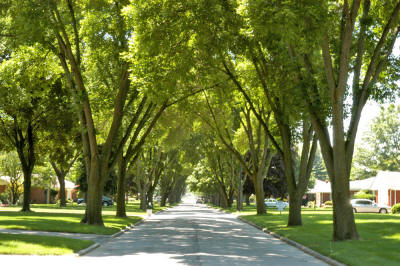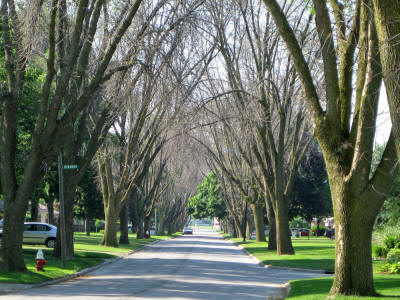|

by Karen Foster
January 17, 2013
from
PreventDisease Website
|
Karen Foster is a
holistic nutritionist, with five kids and an active
lifestyle that keeps her in pursuit of the healthiest
path towards a life of balance. |
As a species, we're just beginning to recognize that the environment
is vital to our health.
The need to reduce acid rain emissions,
stop dumping hazardous wastes, and slow down deforestation needs be
addressed from the perspective of people's health.
Evidence is increasing from multiple
scientific fields that exposure to the natural environment can
improve human health.

The health of our environment affects
human health in different forms.
The air we breathe, the water we drink
and the food we eat are quickly becoming polluted to the point of
being unsafe to consume without endangering our well-being. Will
there be a point of reversal?
For
Geoffrey Donovan, a research forester at the Forest
Service's Pacific Northwest Research Station, and his
colleagues, the loss of 100 million trees in the eastern and
Midwestern United States was an unprecedented opportunity to study
the impact of a major change in the natural environment on human
health.
In an analysis of 18 years of data (The
Relationship Between Trees and Human Health) from 1,296 counties in 15 states,
researchers found that Americans living in areas infested by the
emerald ash borer, a beetle that kills ash trees, suffered from an
additional 15,000 deaths from cardiovascular disease and 6,000 more
deaths from lower respiratory disease when compared to uninfected
areas.
When emerald ash borer comes into a
community, city streets lined with ash trees become treeless.
The researchers analyzed demographic, human mortality, and forest
health data at the county level between 1990 and 2007. The data came
from counties in states with at least one confirmed case of the
emerald ash borer in 2010.
The findings - which hold true after
accounting for the influence of demographic differences, like
income, race, and education - are published in the current issue of
the American Journal of Preventive Medicine.
" There's a natural tendency to see
our findings and conclude that, surely, the higher mortality
rates are because of some confounding variable, like income or
education, and not the loss of trees," said Donovan.
"But we saw the same pattern
repeated over and over in counties with very different
demographic make-ups."
Although the study shows the association
between loss of trees and human mortality from cardiovascular and
lower respiratory disease, it did not prove a causal link.
The reason for the association is yet to
be determined.
We can longer neglect the mounting evidence of wasteful and
destructive human activities which are undermining the capacity of
our planet to provide a secure and hospitable home for all its
peoples, both rich and poor.
Human activities have created a technological civilization that is
now global in scale and pervasive in its influence on the lives and
the prospects of all members of the world community.
It has produced
a world with stark dichotomies between the benefits enjoyed by the
few, and the deprivation and suffering experienced by the majority.
The gross imbalances created by the
concentration of economic growth in developed nations and the high
rates of population growth in developing countries are at the centre
of the current dilemma.
It's time we realized that our entire world is a reflection of our
health and our interactions with each other.
If we refuse to nurture
our environment and care for our own planet, what does that say
about how we think of ourselves?
Tree and Human Health
...May
Be Linked
by
Geoffrey Donovan
Media assistance
Yasmeen Sands
January 16, 2013
from
USForestService Website
USDA Forest Service
Pacific Northwest Research Station
Portland, Ore. - January 16, 2013
Evidence is increasing from multiple
scientific fields that exposure to the natural environment can
improve human health. In a new study (The
Relationship Between Trees and Human Health) by the U.S.
Forest Service, the presence of trees was associated with human
health.
For Geoffrey Donovan, a research forester at the Forest
Service’s Pacific Northwest Research Station, and his
colleagues, the loss of 100 million trees in the eastern and
Midwestern United States was an unprecedented opportunity to study
the impact of a major change in the natural environment on human
health.
In an analysis of 18 years of data from 1,296 counties in 15 states,
researchers found that Americans living in areas infested by the
emerald ash borer, a beetle that kills ash trees, suffered from an
additional 15,000 deaths from cardiovascular disease and 6,000 more
deaths from lower respiratory disease when compared to uninfected
areas.
When
emerald ash borer comes into a
community, city streets lined with ash trees become treeless.
The researchers analyzed demographic, human mortality, and forest
health data at the county level between 1990 and 2007. The data came
from counties in states with at least one confirmed case of the
emerald ash borer in 2010.
The findings - which hold true after
accounting for the influence of demographic differences, like
income, race, and education - are published in the current issue of
the American Journal of Preventive Medicine.
“There’s a natural tendency to see
our findings and conclude that, surely, the higher mortality
rates are because of some confounding variable, like income or
education, and not the loss of trees,” said Donovan.
“But we saw the same pattern
repeated over and over in counties with very different
demographic makeups.”
Although the study shows the association
between loss of trees and human mortality from cardiovascular and
lower respiratory disease, it did not prove a causal link. The
reason for the association is yet to be determined.
The emerald ash borer was first discovered near Detroit, Michigan,
in 2002. The borer attacks all 22 species of North American ash and
kills virtually all of the trees it infests.
The study was conducted in collaboration with,
-
David Butry, with the National
Institute of Standards and Technology
-
Yvonne Michael, with Drexel
University
-
Jeffrey Prestemon, Andrew
Liebhold, Demetrios Gatziolis, and Megan Mao, with the
Forest Service’s Southern, Northern, and Pacific Northwest
Research Stations

A tree-lined street
in Toledo, Ohio in 2006,
before emerald
ash borer infestation.
Credit: Dan Herms,
Ohio State University

Three years later, in 2009,
after the
invasive insect spread to the neighborhood.
Credit: Dan Herms,
Ohio State University
|




